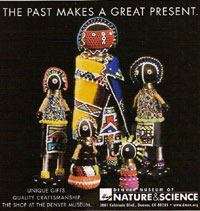Associate Professor of Technocultural Studies, University of California, Davis
Home page
Frances Dyson (Ph.D), is an Associate Professor in Technocultural Studies, with a research and artistic focus on sound, new media and cyberculture in contemporary theory and practice. For the past two years Dyson has been a researcher in residence at the Daniel Langlois Foundation for Art, Science and Technology, Montreal where her web based project “And then it was Now” has recently been published.
Recent essays have appeared in Frakcija, special issue on Rhetoric, (Zagreb, 2006); Convergence: The Journal of Research into New Media Technologies, special issue on “Hybrid identities in Digital Media,” Winter, 2005 (London: Sage), and the Biennale of Sydney Catalogue, Art Gallery of NSW, Australia, 2004 (also published on
www.catherinerichards.ca/html/essays.htm). Book chapters have appeared in Catherine Richard’s Excitable Tissues (Ottawa Art Gallery) 2004; Uncertain Ground, (Sydney: Art Gallery of New South Wales) 2000, The Virtual Dimension: Architecture,
Representation, and Crash Culture, (New York: Princeton Architectural Press) 1998,
Immersed in Technology (Massachusetts: MIT Press) 1996; and Wireless
Imagination: Sound, Radio and the Avant-Garde, (Cambridge: The MIT Press,
1992/94/2002).
For over a decade Dyson has also been a regular contributor to Australia’s premier audio arts program, The Listening Room (Australian Broadcasting Corporation), and her audio artwork can be heard on Australian Broadcasting Corporation and Air America Radio archives.
Currently, Dyson is a member of the Technoscience, Culture and the Arts, and the Technovisual Cultures Research Interest Groups at UC Davis, and is completing a book on sound and new media.
Links: Technocultural Studies | Daniel Langlois Foundation
Quote:
Under Construction


